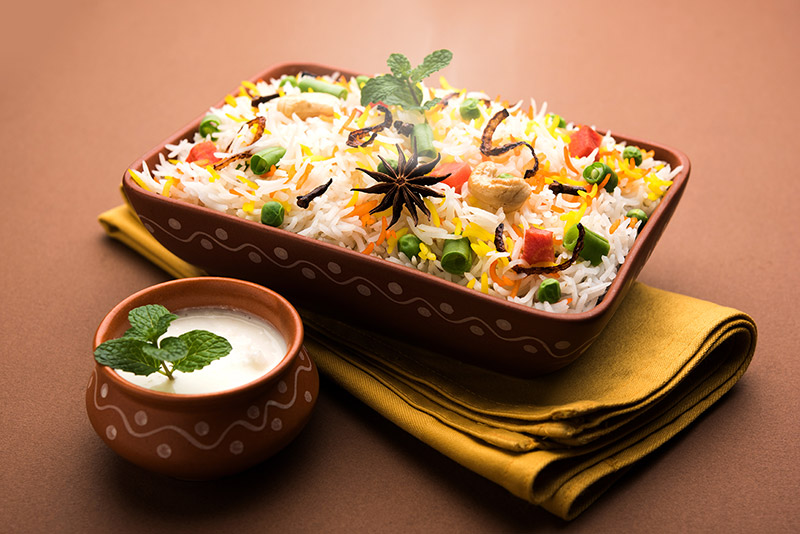The sumptuous biryani is a hot favourite of the Indian palate and many go to great lengths to hunt down their favourite version of this aromatic dish. For some, it’s all about relishing biryani in upscale restaurants for delectable Dining Delights from Axis Bank, while for others, ordering in on a Sunday afternoon makes the experience even more flavourful.
Well, the next time you chow down on this ambrosial treat, here’s something to chew on: while we think of biryani as a dish of royalty that filtered down into local kitchens, it was originally concocted on the dusty plains of Central Asia as a nutritious staple for traders and other immigrants who came to India in medieval times.

‘Biryani’ derives its name from the Turkish ‘biryan’, meaning ‘roasted’, ‘boiled’, ‘grilled’ or ‘baked’, and ‘birinj’, which is Persian for ‘rice’. The origins of this dish lie in the vast plains and mountain ranges of Central Asia. Given the lifestyle of the Turkic tribes who lived in this region – they covered vast distances on horseback – the dish was well suited to their tastes. To save time, they would put meat and rice together in a large pot and leave it to slowly cook over a fire.
There are many legends associated with biryani. One of these claims the dish was an innovation that came to India through the army camps of Timur in the 14th century, but this has been refuted by historians. They say that biryani came in much earlier, with traders and immigrants from Central Asia who settled in India. Another popular but incorrect legend attributes the dish to Mughal queen Mumtaz Mahal.
Regardless of its origin, biryani in its original form was very different from the dish we savour in India today. Believe it or not but this flavourful and fragrant preparation was originally a mix of meat, rice and dry fruits – with very little or no spices! It is the food preferences of the many communities in this vast and varied land that make biryani what it is today. Historian Mohsina Mukadam says, “While biryan may not have originated here, I believe biryani, with its spices and flavours, is a completely Indian innovation.”
The famous Hyderabadi biryani, for instance, shows a strong influence of the fiery Andhra cuisine, while the Malabari biryani of North Kerala has influences brought by Arab traders. Interestingly, as different communities from different parts of the world migrated to India, they bought in influences of their own.
A good example is the Lucknowi biryani and the Moradabadi biryani from two nearby regions of Uttar Pradesh. The Nawabs of Lucknow were originally from Iran, and hence the Lucknowi biryani has a Persian influence, while the Rohilla Pathans from Afghanistan settled in Western Uttar Pradesh and created the Afghan-influenced Moradabadi biryani.
There are other quirks which led to the concoction of different biryanis. For instance, Calcutta biryani is known for generous quantities of potato. The story goes that, banished by the British, in 1856, Wajid Ali Shah, the tenth and last Nawab of Awadh, brought his large entourage to Metiabruz near Kolkata. Feeding the entourage on a stipend of Rs 1 lakh per month was a challenge, so the local cooks tweaked the biryani recipe, replacing meat with perfectly cooked, golden-brown potato. This went on to become the signature Calcutta biryani!
Cuisine is one of those dynamic elements of culture, and biryani is being re-adapted, not just in different parts of the country, but also in different homes!
Disclaimer : This article has been authored by Live History India Digital, a Mumbai based Digital Content Company. Axis Bank doesn't influence any views of the author in any way. Axis Bank & Live History India Digital shall not be responsible for any direct / indirect loss or liability incurred by the reader for taking any financial decisions based on the contents and information. Please consult your financial advisor before making any financial decision.




















